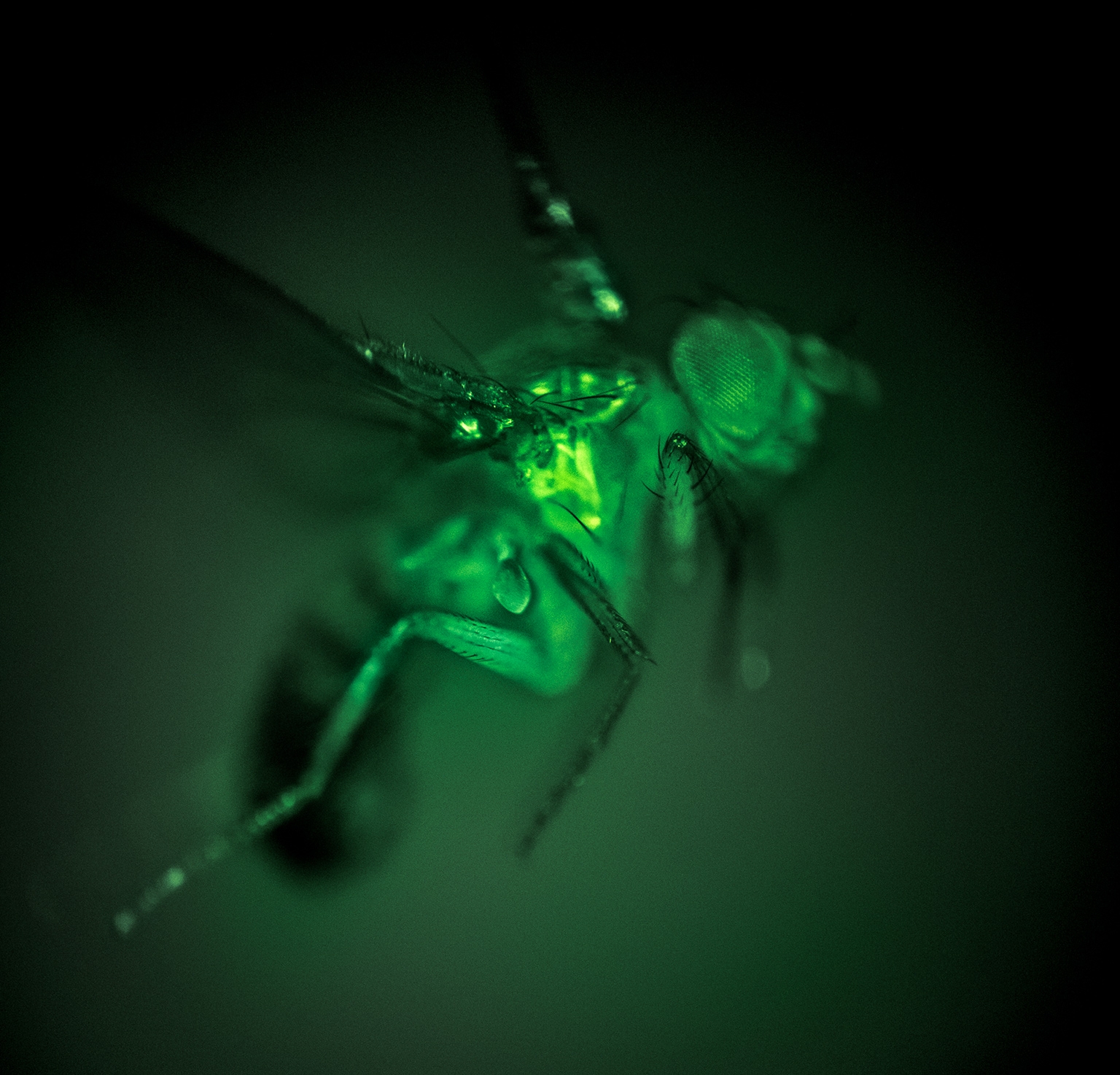
Long exposure of an illuminated fly as it approaches a fermenting strawberry.

Using genetic tools, my colleague Thad Lindsay expressed a green fluorescent calcium indicator in the steering muscles of a fruit fly.

Hundreds of alkali flies take flight on the shore of Mono Lake.

An alkali fly, safely encapsulated inside a protective air bubble.

Catching alkali flies on the shores of Mono Lake for some experiments.

Self portrait, with a macro-fisheye lens.

A fruit fly tethered in a LED-powered virtual environment.

Fluorescence image of a fruit fly brain by my colleague Marie Suver. Green shows neurons that release a neuromodulator, Octopamine.

An unfortunate short eared grebe. Grebes, and many other species, rely on the alkali flies at Mono Lake to fuel their long range migrations.

One of our study sites - Mono Lake - is famous for its picturesque tufa towers, composed of calcium carbonate.

Self portrait in a volcanic fissure near Mono Lake. I took this image at night under short wave ultraviolet illumination, which causes certain minerals to emit a variety of colors.

Strobe image of a hovering drone with four sets of wings (you see 8 wings because the strobe light fired twice during the exposure).

Thousands of fruit flies take flight in a dry desert during one of our experiments to study how they track odor plumes over long distances (featuring my PhD/postdoc advisor, Michael Dickinson).












